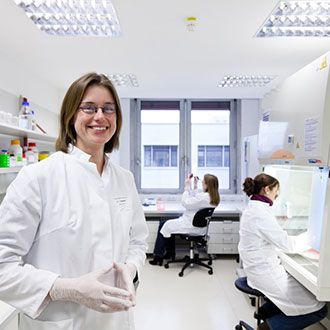Biophotonics Diagnostics, founded on May 4, 2016, develops software solutions and database systems with which life-threatening pathogens and their possible resistances can be identified quickly and easily. The combination of an optical measurement method and computer-based data analysis reduces the time previously required for unambiguous pathogen identification from about one day to a few hours.

Biophotonics Diagnostics is the result of a successful collaboration between the Leibniz Institute for Photonic Technologies Jena (IPHT), the Friedrich Schiller University Jena, the University Hospital Jena and the Berlin-based company rap.ID GmbH. In this research alliance, the technological basis of optical pathogen and resistance diagnostics, the Bio Particle Explorer, was researched and developed with the support of the German Federal Ministry of Education and Research (BMBF). The fully automated particle analyzer from the company rap.ID determines the size, number, shape and chemical fingerprint of bioparticles in patient samples such as blood and urine, or in air and water, using an on-site optical measurement process. The data are compared with profiles of known microorganisms stored in an electronic database. Only through database matching and the application of statistical analysis methods can the microorganisms and their possible antibiotic resistance be clearly identified. Biophotonics Diagnostics develops these technological software solutions for rapid and automated pathogen diagnostics and creates specific working instructions for the respective medical issues (so-called Standard Operating Procedures).
Biophotonics Diagnostics draws important impulses for the further development of the technology from the academic expertise of the IPHT, from the University of Jena and the University Hospital Jena. In particular, Biophotonics Diagnostics benefits from the good connections to Jena research networks such as the InfectoGnostics research campus and the business strategy know-how of the partner company rap.ID. In addition, Biophotonics Diagnostics works closely with customers from medical and pharmaceutical research to promote the routine use of the new diagnostics in clinics and laboratories and to market the technology throughout Germany and Europe. In addition to clinical diagnostics, the rapid, cost-effective and simple pathogen detection method is used in food and environmental monitoring as well as in pharmaceutical production.
Prof. Jürgen Popp explains the enormous application potential of the technology by way of example: "In the case of sepsis, blood poisoning, the pathogenic bacteria must be identified as quickly, reliably and unambiguously as possible in order to initiate treatment with suitable antibiotics. Until now, this required at least one day. This means that valuable time, which is crucial for the correct therapy, is lost. With the diagnostics we have developed, we can reduce the time required to just a few hours. Doctors thus gain a head start that can be life-saving in the treatment of sepsis."
Since 2002, partners from science and industry have been researching and developing the underlying technologies as part of various research projects funded by the German Federal Ministry of Education and Research (BMBF).

